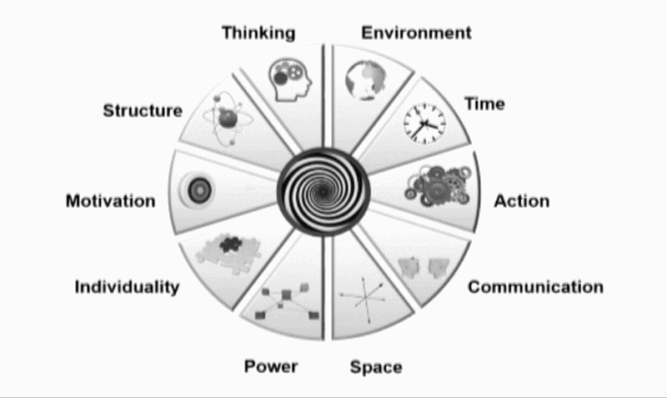Culture
Culture refers to the values, norms, and behaviors of a community or organization, as well as those of its individuals, that influence the way people interact, communicate, and collaborate. In companies, it provides a framework for coordinating, integrating, and motivating employees by offering clear strategies, structures, and tools. It impacts leadership, decision-making processes, and innovative capabilities, promoting sustainable, value-driven development. It supports change and ensures long-term success through transformation, technology integration, and adaptability.

A strong corporate culture combines individual identities with shared goals, thereby creating a productive and trusting work environment. Culture targets two areas: the milieu and the subjects involved. The social, societal, and cultural environments form the milieu and influence three areas: the way of cooperating, the way of dealing with change, and the competing ways of thinking. The ten Cultural Orientation Indicators (COIs) have proven their worth as personal cultural dimensions: Environment, Time, Action, Communication, Space, Power, Individuality, Motivation, Structure, and Thinking

The original purpose of corporate culture is to align employees and managers.
- Establish an understanding of the formal and functional components of culture.
- Publish descriptions and practical examples of desired behaviors, habits, and routines.
- A clear interpretation of the corporate strategy is published to minimize frictional losses during implementation through a common understanding of goals, values, and standards.
- Prevent the development of subcultures with divergent objectives to reduce frictional losses.
- Foster employee motivation through attractive values and convictions of cooperation and leadership
- Execute initiatives to develop and promote the corporate culture
Although culture includes soft factors, it has a significant impact on business

